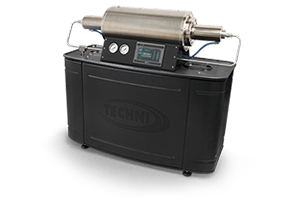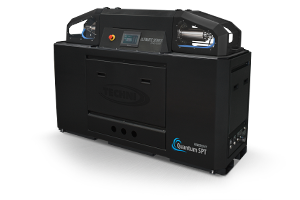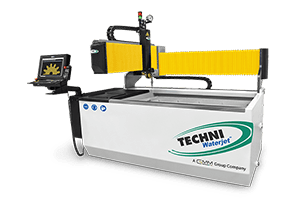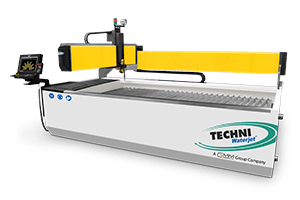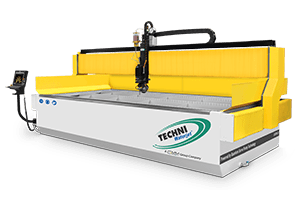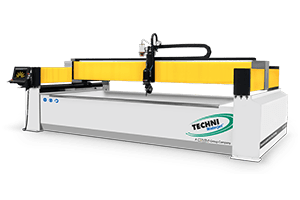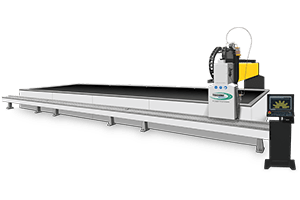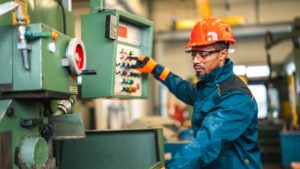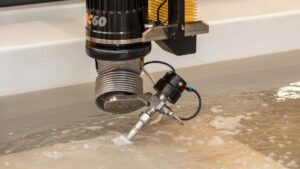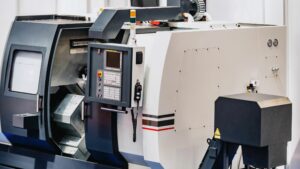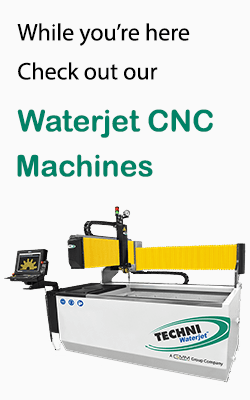Metal fabrication, a cornerstone of modern manufacturing, intricately shapes our world. This comprehensive guide delves deep into the realm of metal fabrication, exploring its definition, historical evolution, and the intricate processes that transform raw metal into diverse, complex structures. Whether you’re a professional in the industry or a curious learner, this exploration will illuminate the significance of metal fabrication in today’s world.
What is Metal Fabrication?
Metal fabrication is the art and science of building metal structures by cutting, bending, and assembling processes. This intricate craft involves transforming raw metal materials into pre-designed shapes and products, showcasing a blend of technical skills and creativity. The process ranges from hand-wrought designs to high-tech, computer-aided creations.
How Did Metal Fabrication Evolve Historically?
Metal fabrication, a craft as old as civilization itself, has played a pivotal role in shaping the world you see today.
From ancient blacksmiths forging tools to modern industries shaping skyscrapers, the journey of metal fabrication is a testament to human ingenuity and technological advancement. Let’s delve into this rich history and uncover how metal fabrication evolved from its primitive origins to the sophisticated processes of the 21st century.
The Ancient Beginnings
The story of metal fabrication begins in the ancient times when early humans discovered metals. Initially, simple techniques like hammering were used to shape metals into rudimentary tools and weapons.
These early methods laid the foundation for the complex processes you see in the metal fabrication industry today.
The Industrial Revolution: A Turning Point
The Industrial Revolution marked a dramatic shift in metal fabrication. The introduction of steam power and mechanization transformed the way metal was processed. It was during this era that key metal fabrication processes, such as forging and sheet metal work, evolved significantly. Technologies like the steam hammer and the rolling mill revolutionized metalworking, making it possible to mass-produce metal products with unprecedented efficiency.
20th Century: The Era of Automation and Innovation
As the 20th century unfolded, metal fabrication saw a surge in technological innovations. The advent of electric welding, including methods like metal inert gas (MIG) welding and tungsten inert gas (TIG) welding, revolutionized the way metal pieces were joined.
Techniques like shielded metal arc welding and flux-cored arc welding further enhanced the precision and strength of metal fabrications.
The 21st Century: Advanced Technologies and Customization
Today, metal fabrication stands at the forefront of technological innovation. Computer-aided design (CAD) and computer numerical control (CNC) machining have allowed for precise and intricate designs that were once impossible. Processes like laser cutting and plasma cutting have brought about a new era of efficiency and accuracy. The industry now caters to a wide range of needs, from structural steel fabrication for construction to customized fabricated metal products for various industries.
Throughout its evolution, metal fabrication has remained a vital part of human development, constantly adapting and advancing to meet the needs of each era. From shaping simple tools to constructing modern marvels, the art of metal fabrication continues to play a crucial role in driving progress and innovation.
How does Metal Fabrication work?
Metal fabrication is a complex and nuanced process, essential in transforming raw metal into functional and aesthetic products. You, as an enthusiast or a professional in the industry, might be intrigued by the intricacies of how a simple metal sheet transforms into a sophisticated product. This process involves a series of stages, each critical in ensuring the final product meets the desired quality, strength, and design.
What are the different stages of Metal Fabrication?
Metal fabrication isn’t a single action but a symphony of processes, each harmonizing to create a final product that meets your specific needs. Let’s break down these stages:
- Material Selection: The journey begins with selecting the appropriate raw materials. Metals like stainless steel, aluminum, and brass, each with unique properties, are chosen based on the project requirements.
- Designing: Here, collaboration between the customer and the design team is key. Using CAD software, engineers draft the initial design, ensuring that every detail aligns with your vision and practical applications.
- Process and Machine Selection: Depending on the design, specific fabrication processes such as laser cutting, MIG welding, or CNC machining are chosen. The selection of machinery, whether it’s a plasma cutter or a press brake, is crucial to achieve precision.
- Fabricating: This stage is where the actual shaping of metal occurs. Techniques like cutting, bending, welding, and assembling are used to bring the design to life. Each method, from shielded metal arc welding for joining to laser technology for cutting, plays a pivotal role.
- Finishing and Quality Check: The final touches involve finishing processes like powder coating or sandblasting to enhance durability and appearance. A comprehensive quality check follows, ensuring the fabricated product adheres to the highest standards.
What are the main parameters of metal fabrication?
Understanding the key metal fabrication parameters is crucial for achieving the desired outcome. These parameters, like the ingredients in a complex recipe, determine the quality, durability, and functionality of the fabricated metal products.
Here, we’ll explore the essential parameters that guide the metal fabrication process, ensuring you grasp the full scope of this technical yet artistic endeavor.
- Material Type: The choice of metal – whether it’s stainless steel, aluminum, or brass – significantly influences the fabrication process. Each metal has unique properties like strength, malleability, and corrosion resistance, dictating its suitability for different applications.
- Design Complexity: The intricacy of the design impacts the fabrication method. Complex designs may require advanced techniques like precision laser cutting or CNC machining.
- Fabrication Process: The selection of specific processes like MIG welding, plasma cutting, or bending is paramount. Each process has its subtleties and requirements.
- Tolerance Levels: Precision is key in metal fabrication. The tolerance level dictates how closely the fabricated piece must adhere to the specified dimensions.
- Surface Finish: The final appearance and corrosion resistance are determined by the surface treatment, such as powder coating or sandblasting.
- Production Volume: Whether it’s a single custom piece or high-volume production, the quantity influences the choice of fabrication techniques and machinery.
- Material Thickness: The thickness of the metal sheet or rod affects the choice of cutting and shaping methods.
- Machining Speed and Feed Rate: In CNC machining, the speed and feed rate impact the quality of the cut and the overall efficiency of the process.
- Welding Techniques: The selection between TIG, MIG, or arc welding depends on the metal type and the required strength of the weld.
- Quality Control Standards: Adherence to quality standards ensures the fabricated product meets the necessary safety and performance criteria.
What Are the Main Processes in Metal Fabrication?
Metal fabrication is an umbrella term that encompasses a wide range of processes, each integral in shaping and transforming metal into the desired form. The mastery of these processes is what makes metal fabrication both an art and a science. Let’s delve into the key processes that make up the backbone of metal fabrication.
Cutting:
Cutting is the foundational step in metal fabrication, shaping the raw material into manageable pieces.
- Traditional Methods: These include sawing and shearing, providing straightforward ways to cut metal with precision.
- Modern Methods: Advancements like laser cutting, waterjet cutting, and plasma cutting offer enhanced precision and speed, enabling intricate designs and efficient production.
Bending:
Bending is crucial for shaping metal without removing any material, essential for creating angles and complex forms.
- Techniques Used: Press brakes, folding machines, and manual hammering are common methods for bending metal sheets and rods.
- Result: The bending process achieves desired angles and shapes while maintaining the metal’s inherent strength and integrity.
Welding:
Welding, a process fundamental to metal fabrication, involves the fusion of metal parts. This transformative method is vital in creating structures and components that are both strong and durable.
- MIG Welding (Metal Inert Gas Welding): A versatile and common method, MIG welding is used extensively in fabricating both thick and thin materials, suitable for a wide range of metals.
- TIG Welding (Tungsten Inert Gas Welding): Known for its precision, TIG welding is used for welding thinner materials and intricate shapes, requiring skilled welders.
- Arc Welding: This traditional form of welding uses an electric arc to melt metals at the welding point, suitable for heavy-duty metal fabrication jobs.
Machining:
Machining is the process of removing parts of metal to achieve a specific shape or design, crucial for creating components with high precision.
- Drilling: Employed to create holes in metal, drilling is a fundamental machining process.
- Milling: This process involves rotating cutting tools to remove material, shaping the metal into the desired form.
- Turning and Lathing: Turning is used to shape metal by rotating it against a cutting tool, ideal for producing symmetrical components like rods and shafts.
Punching:
Punching, an efficient method in metal fabrication, involves creating holes or indents in metal using a punch and die. It’s often utilized in high-volume production environments.
Stamping:
Stamping is a step beyond punching, not only creating holes but also involving additional steps like bending, embossing, or coining, which add to the metal’s shape and texture.
Forging:
Forging shapes metal using compressive forces, a method that dates back centuries. It includes techniques like:
- Hammer Forging: Shaping metal through successive hammer blows, ideal for custom-shaped components.
- Press Forging: Using a mechanical press to shape metal, suitable for high-volume production of uniform parts.
Casting:
Casting is a fundamental process in metal fabrication, especially when intricate or complex shapes are required.
- Process Overview: This involves pouring molten metal into a mold. Once the metal cools and solidifies, it takes on the shape of the mold. Casting is particularly useful for creating components that are challenging to shape through other fabrication methods.
- Applications: From automotive parts to decorative items, casting allows for the production of diverse shapes and sizes, making it a versatile choice in the metal fabrication industry.
Shearing:
Shearing is a straightforward yet vital process, primarily used for cutting flat sheet metal.
- Method: It involves slicing through metal, typically using a large shear machine. The process is akin to cutting a piece of paper but on a much more robust scale.
- Utility: Shearing is commonly employed for cutting straight lines on flat metal stock, essential for sizing sheets before they undergo further fabrication processes.
Forming:
Forming is another key process in metal fabrication, involving the shaping of metal under tension.
- Techniques: This can include a range of methods such as stretching, bending, and spinning. Each technique manipulates the metal into different shapes and forms without removing any material.
- Benefits: The forming process is instrumental in creating curved or angled components, essential in various applications from construction to automotive manufacturing.
Finishing:
The finishing phase in metal fabrication is crucial for enhancing both the appearance and functionality of metal products.
- Surface Treatments: Common treatments include sandblasting, painting, and powder coating. Each method serves to not only improve the aesthetic appeal but also to provide a protective layer against corrosion, wear, and tear.
- Importance: A well-applied finish extends the lifespan of the metal product and can significantly enhance its resistance to environmental factors.
What Are the Different Types of Metal Fabrication?
Metal fabrication is not a one-size-fits-all process. It varies significantly depending on the application and industry, each requiring a unique approach and specialized techniques.
Understanding these different types of metal fabrication is crucial for selecting the most suitable method for your project.
Industrial Metal Fabrication:
Industrial metal fabrication caters to the needs of large-scale industries and typically involves the production of heavy equipment and machinery.
- Application in Heavy Machinery: Creating components for heavy-duty machinery used in construction and mining.
- Manufacturing of Industrial Tools: Producing tools and equipment for various industrial applications, including automated and manual machinery.
- Production of Structural Components: Fabricating essential parts for large structures such as bridges, buildings, and towers.
Structural Metal Fabrication:
This type of fabrication focuses on creating components for architectural and structural purposes.
- Building Frameworks: Crafting steel beams, columns, and other structural elements for buildings and infrastructure.
- Architectural Metalwork: Creating aesthetically pleasing and functional elements such as staircases, railings, and architectural details.
- Bridges and Large Structures: Fabricating the critical components that ensure the strength and durability of bridges and similar large structures.
Commercial Metal Fabrication:
Commercial metal fabrication is geared towards producing products used in commercial settings, from small businesses to large corporate environments.
- Office Furniture and Fixtures: Designing and fabricating metal components for desks, chairs, and decorative elements in office buildings.
- Retail Store Fittings: Creating metal shelving, racks, and display units for retail stores.
- Hospitality Industry Requirements: Producing metal-based furniture and decorative elements for hotels, restaurants, and entertainment venues.
‘H3: Custom Metal Fabrication:
Custom metal fabrication is tailored to meet unique needs, producing one-of-a-kind items or limited runs.
- Prototyping and Design Development: Ideal for developing prototypes or unique designs that don’t fit standard manufacturing processes.
- Specialized Components: Custom fabrication is often used for creating parts that require specific dimensions or properties not available in standard products.
- Artistic and Unique Creations: Often employed in artistic installations, custom furniture, and architectural elements where uniqueness and creativity are paramount.
Ornamental Metal Fabrication:
This type of fabrication is all about aesthetics, crafting decorative and artistic metal works.
- Architectural Accents: Includes fabricating ornamental railings, gates, and grilles for buildings.
- Custom Art Pieces: Creating unique sculptures and artwork that require skilled craftsmanship.
- Interior and Exterior Decor: Producing metal elements for both interior design and landscape architecture, enhancing visual appeal.
Sheet Metal Fabrication:
Sheet metal fabrication involves forming and manipulating thin sheets of metal, commonly used in various industries.
- HVAC Systems: Crafting ductwork and other components for heating, ventilation, and air conditioning systems.
- Automotive Parts: Manufacturing body panels, frames, and other parts for vehicles.
- Electronic Enclosures: Creating casings and housings for electronic devices and machinery.
Metal fabrication is also used for rapid sheet metal prototyping.
Electrical Metal Fabrication:
This fabrication type focuses on components used in the electrical industry, requiring precision and compliance with strict standards.
- Electrical Cabinets and Enclosures: Building housings and cabinets for electrical equipment.
- Conductive Components: Fabricating parts that conduct electricity, like bus bars and connectors.
- Custom Electrical Solutions: Tailoring components for specific electrical applications, often requiring a high degree of customization.
What Are Commonly Fabricated Metals and Their Properties?
In the realm of metal fabrication, understanding the properties of different metals is essential. Each type of metal brings unique characteristics to the table, influencing how it can be manipulated and used. Let’s dive into some commonly fabricated metals and explore their properties and why they are suitable for metal fabrication.
Carbon Steel:
Carbon steel, known for its versatility and strength, is a popular choice in metal fabrication.
- High Strength: Ideal for constructing buildings and bridges.
- Ductility: Allows for effective shaping and forming.
- Weldability: Easily welded, making it suitable for a variety of fabrication projects.
Stainless Steel:
Stainless steel is renowned for its corrosion resistance and strength, making it a preferred material in many industries.
- Corrosion Resistance: Excellent for use in environments where rust and corrosion are concerns.
- Aesthetic Appeal: Has a clean and modern appearance, perfect for visible architectural elements.
- Hygienic Qualities: Non-porous surface makes it ideal for medical and food-related applications.
Tool Steel:
Tool steel is known for its hardness and ability to hold a sharp edge, making it suitable for cutting and shaping other materials.
- Wear Resistance: Maintains its shape under rigorous conditions, perfect for dies and cutting tools.
- Heat Resistance: Retains hardness at high temperatures.
- Versatile Applications: Used in the manufacturing of drills, cutters, and moldings.
Which steel is best for metal fabrication?
The choice of steel for metal fabrication largely depends on the specific requirements of the project.
- Carbon Steel: Best for structural applications due to its strength and ductility.
- Stainless Steel: Ideal for projects requiring corrosion resistance and a sophisticated appearance.
- Tool Steel: Perfect for fabricating tools and components that must withstand abrasive or high-impact forces.
Aluminum:
Aluminum is renowned for its lightweight and corrosion-resistant properties.
- Lightweight: Ideal for applications where weight is a concern, like in aerospace and automotive industries.
- Corrosion Resistance: Excellent for outdoor applications, ensuring longevity.
- Conductivity: Highly conductive, making it suitable for electrical and thermal applications.
Copper:
Copper is valued for its electrical conductivity and malleability.
- Electrical Conductivity: Widely used in electrical components due to its excellent ability to conduct electricity.
- Malleability: Easily shaped, ideal for creating intricate designs and components.
- Heat Resistance: Good heat resistance, useful in applications involving high temperatures.
Brass:
Brass, an alloy of copper and zinc, is known for its acoustic properties and machinability.
- Acoustic Properties: Often used in musical instruments for its unique sound quality.
- Machinability: Easy to machine and shape, suitable for detailed decorative items.
- Corrosion Resistance: Offers decent resistance to corrosion, enhancing its durability.
Bronze:
Bronze, another copper alloy, is appreciated for its strength and resistance to wear.
- Strength and Durability: Stronger than pure copper, suitable for bearings, bushings, and marine applications.
- Wear Resistance: Excellent for components that undergo frequent friction and wear.
- Aesthetic Appeal: Often used in art and sculptures for its distinct color and finish.
Nickel:
Nickel is sought after for its high corrosion resistance and ability to alloy with many metals.
- Corrosion Resistance: Especially useful in harsh environments, resisting oxidation and corrosion.
- Versatility in Alloying: Can be alloyed with various metals to improve their properties.
- High Melting Point: Suitable for high-temperature applications.
Titanium:
Titanium stands out for its strength-to-weight ratio and corrosion resistance.
- Strength-to-Weight Ratio: Exceptionally strong yet lightweight, ideal for aerospace and medical implants.
- Corrosion Resistance: Resistant to corrosion from sea water and chlorine, suitable for marine applications.
- Biocompatibility: Non-toxic and biocompatible, making it perfect for medical applications.
Magnesium:
Magnesium is favored for its lightness and strength, often used in alloy form.
- Lightweight: One of the lightest metals, beneficial for automotive and aerospace components to improve fuel efficiency.
- Strength: Offers a good strength-to-weight ratio.
- Machinability: Easily machined, making it suitable for complex components.
Zinc:
Zinc is primarily used for its ability to protect steel from corrosion.
- Galvanization: Often used in galvanizing steel to protect it from rust.
- Low Melting Point: Suitable for die-casting applications.
- Malleability: Malleable, especially when alloyed, making it suitable for a range of fabrication processes.
What Are the Advantages of Metal Fabrication?
Metal fabrication, a cornerstone of modern manufacturing, offers numerous benefits. This process of creating metal structures by cutting, bending, and assembling has revolutionized industries. Let’s delve into some of the key advantages:
- Versatility: Metal fabrication allows for creating a wide range of products, from small components to large machinery.
- Durability: Fabricated metal products are known for their strength and longevity, resistant to warping and corrosion.
- Customization: Offers the flexibility to create custom designs, catering to specific needs and specifications.
- Efficiency: Advanced techniques like laser cutting and CNC machining provide quick and precise results.
- Cost-Effective: Mass production capabilities reduce overall costs, making it economically viable for large-scale projects.
- Strength-to-Weight Ratio: Metals, especially alloys like aluminum, offer high strength with relatively low weight, ideal for various applications.
- Aesthetics: Metal fabrication provides options for aesthetically pleasing finishes, including painting and powder coating.
- Recyclability: Most metals used in fabrication are recyclable, supporting sustainable manufacturing practices.
- Innovation: Constant technological advancements in metal fabrication processes lead to continuous improvement in product quality.
- Safety: Fabricated metal structures, when done correctly, meet high safety standards, essential in industries like automotive and construction.
What are the Applications of Metal Fabrication?
Metal fabrication, a cornerstone of modern industry, finds its applications across a vast array of sectors. Each industry utilizes the versatility and strength of metal to fulfill specific needs, ranging from structural frameworks to intricate consumer products. Let’s explore some of these industries and their unique uses for metal fabrication.
Construction and Building
In the construction and building industry, metal fabrication plays a crucial role.
- Structural Frameworks: Fabrication of steel beams, columns, and other structural elements vital for buildings and bridges.
- Architectural Metalwork: Creation of aesthetic elements like staircases, railings, and decorative panels.
- Infrastructure Projects: Use in large-scale projects like airports, stadiums, and skyscrapers for both functional and decorative purposes.
Automotive Industry
The automotive industry heavily relies on metal fabrication for both structural integrity and aesthetic appeal.
- Body and Frame Components: Fabricating the essential structural components of vehicles.
- Engine Parts: Creating various engine components that require precision and strength.
- Custom Modifications: Tailoring parts for specialized or high-performance vehicles.
Aerospace Industry
In the realm of aerospace, metal fabrication must meet extremely high standards of precision and quality.
- Airframe Components: Manufacturing the structural components of aircraft.
- Engine Parts: Producing intricate engine components designed to withstand extreme conditions.
- Specialized Equipment: Creating tools and equipment for aerospace manufacturing and maintenance.
Shipbuilding
Shipbuilding utilizes metal fabrication for creating robust and seaworthy vessels.
- Hull Construction: Fabricating the structural framework of ships.
- Deck Fittings: Creating the metal components used on the deck and in the interior of ships.
- Custom Components: Producing specialized parts for different types of vessels, from cargo ships to luxury yachts.
Consumer Products
Metal fabrication also finds its way into various consumer products, showcasing its versatility.
- Appliances: Fabricating components for household appliances like refrigerators and ovens.
- Furniture: Creating metal parts for furniture, offering both strength and design flexibility.
- Electronic Devices: Producing metal casings and components for electronic gadgets and devices.
Energy Sector
In the energy sector, metal fabrication plays a pivotal role in both traditional and renewable energy sources.
- Oil and Gas: Fabrication of pipelines, storage tanks, and drilling equipment.
- Wind Power: Producing turbine blades and structural components for wind farms.
- Solar Energy: Creating frames and mounts for solar panels.
Medical Equipment
The precision and reliability of metal fabrication are crucial in the medical field.
- Surgical Instruments: Crafting various tools used in surgeries, requiring precision and durability.
- Medical Devices: Manufacturing components for devices like MRI machines and prosthetics.
- Hospital Equipment: Producing beds, wheelchairs, and other metal-based equipment.
Military and Defense
Metal fabrication in the military sector focuses on strength, precision, and confidentiality.
- Vehicle Armor: Fabricating armored plating for military vehicles.
- Weaponry: Producing components for firearms and artillery.
- Naval Ships: Building and repairing components for military vessels.
Electronics and Electrical
The electronics industry heavily relies on metal fabrication for both structural and conductive components.
- Circuit Boards: Creating metal frames and cases for circuit boards and electronic devices.
- Conductive Elements: Producing connectors and conductive tracks for various electronic applications.
- Heat Sinks: Manufacturing metal parts that dissipate heat in electronic systems.
Industrial Machinery and Equipment
Metal fabrication is key in producing heavy machinery and industrial equipment.
- Machinery Frames: Building frames and structures for industrial machines.
- Gears and Tools: Crafting specialized tools and gears for various machinery.
- Conveyor Systems: Developing metal-based conveyor systems for manufacturing plants.
Transportation Infrastructure
Transportation infrastructure heavily utilizes metal fabrication for its durability and strength.
- Bridge Components: Fabricating steel beams, joints, and other structural elements of bridges.
- Railway Systems: Creating rails, structural components, and safety systems for trains and trams.
- Signage and Supports: Producing metal signs and support structures for highways and urban roads.
Art and Sculpture
In the world of art, metal fabrication allows for creative expression through durable materials.
- Public Installations: Crafting large-scale metal sculptures for public spaces.
- Gallery Pieces: Creating intricate and detailed metal artworks for galleries and exhibitions.
- Decorative Elements: Fabricating artistic elements for buildings and landscapes. Furniture and Interior Design
Metal fabrication finds its way into interior design and furniture, blending functionality with aesthetics.
- Metal Furniture: Producing chairs, tables, and shelving units with a metal framework.
- Interior Accents: Creating metal staircases, railings, and decorative panels.
- Custom Design Elements: Tailoring metal pieces for specific interior design themes.
Telecommunications
In telecommunications, metal fabrication is essential for infrastructure and devices.
- Transmission Towers: Constructing metal towers and structures for signal transmission.
- Equipment Racks: Fabricating racks and enclosures for telecommunication equipment.
- Device Components: Producing metal parts for communication devices.
What Softwares are Used in Metal Fabrication?
The metal fabrication industry relies heavily on advanced software to enhance precision, efficiency, and creativity in its operations. These software tools, ranging from design to production management, are essential in today’s highly competitive and technologically driven market.
CAD (Computer-Aided Design) Software
- Function: Enables the creation of detailed 3D models and blueprints for metal parts.
- Examples: AutoCAD, SolidWorks, and Autodesk Inventor.
- Usage: Widely used for product design and prototyping.
CAM (Computer-Aided Manufacturing) Software
- Function: Transforms CAD models into CNC machine instructions.
- Examples: Mastercam, Fusion 360.
- Usage: Essential for automating the manufacturing process and enhancing precision.
CAE (Computer-Aided Engineering) Software
- Function: Used for simulation, validation, and optimization of metal parts.
- Examples: ANSYS, Siemens NX.
- Usage: Helps in predicting the performance of the fabricated metal under various conditions.
ERP (Enterprise Resource Planning) Software
- Function: Manages core business processes, including inventory, procurement, and project management.
- Examples: SAP ERP, Oracle ERP.
- Usage: Streamlines operations, reduces waste, and optimizes resource allocation.
Nesting Software
- Function: Optimizes material usage by efficiently arranging cutting patterns.
- Examples: SigmaNEST, Hypertherm’s ProNest.
- Usage: Crucial in reducing waste and maximizing material utilization.
PLC (Programmable Logic Controller) Software
- Function: Controls the machinery used in metal fabrication.
- Examples: Siemens SIMATIC, Allen-Bradley.
- Usage: Enables automation of complex processes and machinery control.
Quality Management Software
- Function: Ensures that the fabrication processes meet industry standards and quality requirements.
- Examples: QT9 QMS, MasterControl.
- Usage: Vital for maintaining high standards of quality and compliance with regulations.
The integration of these software tools in metal fabrication processes ensures not only accuracy and efficiency but also enables innovation and custom fabrication, pushing the boundaries of what can be achieved in the metal fabrication industry.
Is Metal Fabrication Expensive?
The cost of metal fabrication varies widely, influenced by a range of factors.
The complexity of the project, the type of metal used, and the required fabrication techniques all play a significant role in determining the overall expense.
- Material Costs: Different metals, such as stainless steel, aluminum, and copper, vary in price. The choice of material can significantly impact the overall cost.
- Design Complexity: More complex designs require more time and resources, increasing the cost.
- Fabrication Techniques: Advanced techniques like laser cutting or precision machining can add to the cost.
- Labor Costs: Skilled labor is essential in metal fabrication, and labor costs can be a significant part of the overall expense.
- Quantity: Larger production runs typically reduce the cost per unit due to economies of scale.
- Finishing Processes: Additional processes like painting, powder coating, or anodizing add to the final cost.
- Quality and Compliance Requirements: Meeting specific industry standards or certifications can increase costs.
- Lead Time and Deadlines: Rush orders may incur additional costs due to the need for overtime or expedited shipping.
While metal fabrication can be costly, especially for custom or specialized projects, its benefits in terms of durability, strength, and customization often outweigh the initial investment.
Additionally, advancements in technology and efficient manufacturing processes can help in managing and reducing costs.
What Are the Challenges and Solutions in Metal Fabrication?
Metal fabrication, while versatile and effective, comes with its set of challenges. Understanding these issues and implementing practical solutions is crucial for maintaining quality and efficiency.
Challenges and Solutions:
- Warping: Caused by uneven heating and cooling. Solution: Controlled heating and gradual cooling processes.
- Corrosion: Exposure to elements leads to rust and deterioration. Solution: Use corrosion-resistant metals or apply protective coatings.
- Material Fatigue: Repeated stress causes weakening. Solution: Accurate stress analysis and using materials with high fatigue strength.
- Precision Errors: Inaccuracies in cutting or shaping. Solution: Utilize advanced precision tools like CNC machinery and ensure proper calibration.
- Weld Defects: Issues like porosity or cracks in welding. Solution: Implement proper welding techniques and use high-quality welding equipment.
- Dimensional Inaccuracy: Deviation from design specifications. Solution: Regular calibration of tools and rigorous quality checks.
- Tool Wear: Frequent use leading to tool degradation. Solution: Regular maintenance of tools and using high-grade, durable tool materials.
- Surface Imperfections: Scratches or dents during handling. Solution: Gentle handling and using surface protection methods during fabrication.
- Assembly Difficulties: Misalignment or fit issues. Solution: Precision fabrication and thorough testing of components before assembly.
By addressing these challenges through meticulous processes and advanced technology, metal fabrication can achieve high-quality results that stand the test of time.
Conclusion
Metal fabrication is an indispensable part of modern industry, offering versatility, durability, and precision. It enables the creation of a wide range of products, from everyday items to complex industrial machinery.
The advancement in technology, such as CNC machinery and various welding techniques, has significantly improved the efficiency and quality of metal fabrication. Despite facing challenges like material warping, corrosion, and precision errors, the industry continues to evolve with innovative solutions, maintaining its crucial role in the global manufacturing landscape.
FAQ
Is Metal Fabrication Hard?
Metal fabrication can be challenging due to the precision, technical skills, and understanding of materials required. It involves various complex processes like cutting, welding, and shaping metals. However, with proper training, experience, and the use of advanced technology, metal fabricators can effectively manage these challenges, making the process a rewarding field.
What is the Difference Between Steel Fabrication and Metal Fabrication?
Steel fabrication is a subset of metal fabrication focused specifically on steel components. It involves cutting, bending, and assembling steel to create structures or products. Metal fabrication, on the other hand, encompasses a broader range of materials, including aluminum, copper, and brass, and involves various processes to shape these metals into desired forms and products.
